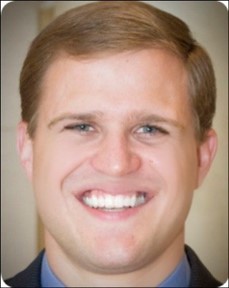Accurate data informs better decisions. Owners, operators, and developers want to know what factors drive their business to help it grow.
Now, NIC MAP Vision offers insights on local acuity rates based on Medicare claims data. This invaluable information provides a window into the healthcare needs of seniors in a particular market.
NIC Chief Economist Beth Mace recently talked with NIC MAP Vision CEO Arick Morton. They discussed how Medicare data can help stakeholders make better decisions about which markets are under or overserved. Here is a recap of their conversation.
Mace: Senior living operators looking to enter a market area often simply track age and income eligibility with public census data. This assumes little to no variation in the needs along the care continuum. Is this a sufficient approach? Why or why not?
Morton: The answer to that is a resounding ‘No.’ A rise in acuity and the associated need is really the core driver of the senior housing business these days.  Qualified residents are those who need the product and have the ability to pay. Historically, age has been used a proxy for need. But we couldn’t quantify the need. So, we restricted the analysis to ages 75-plus to determine national averages of need rates among that group in a specific market. The major challenge to that approach is that Seattle and Biloxi, for example, have very different acuity rates in their senior population. We’ve analyzed the variations by market and the differences are considerable. The differences also vary within communities. When considering whether to build a new community, not being able to calibrate the need metric at the local level really frustrates the ability to get an accurate picture. That was one of the things we set out to solve. And now, with Medicare claims data, we can see the rate of healthcare needs that allows us to calibrate utilization down to the market level.
Qualified residents are those who need the product and have the ability to pay. Historically, age has been used a proxy for need. But we couldn’t quantify the need. So, we restricted the analysis to ages 75-plus to determine national averages of need rates among that group in a specific market. The major challenge to that approach is that Seattle and Biloxi, for example, have very different acuity rates in their senior population. We’ve analyzed the variations by market and the differences are considerable. The differences also vary within communities. When considering whether to build a new community, not being able to calibrate the need metric at the local level really frustrates the ability to get an accurate picture. That was one of the things we set out to solve. And now, with Medicare claims data, we can see the rate of healthcare needs that allows us to calibrate utilization down to the market level.
Mace: Can you give an example of how NIC MAP Vision is used to assess opportunities in each MSA?
Morton: The Alzheimer’s Association, for example, publishes dementia incidence data on an annual basis. Developers may use those national numbers, which on average are accurate. But the dementia level in any given local market could massively vary. Now we have the data on the local level. Instead of assuming we have an average of a 10% incidence of dementia out of 100 individuals in the 75-plus age group, we know that there are actually 18 individuals with dementia because we have the Medicare claims data. That data is housed in Medicare’s Chronic Conditions Data Warehouse. It includes all claims in a master beneficiary file with basic demographic information about the beneficiary. Their diagnoses can be searched, say, for dementia.
Mace: Medicare claims data can be used to show a market area’s quality measures, such as readmission rate or dollars spent per point of the HCC medical codes. How can operators use this data to tailor services to potential residents?
Morton: There are a lot of benchmarking capabilities that can be leveraged. At the simplest level, operators can look at what the cognitively impaired population looks like. What are the other healthcare characteristics of that population? What does the assisted living and memory care continuum look like? A market may have a lot of healthier individuals with early-stage memory loss. So, does a bridge program make sense? What doesn’t a market have? How do we bend the cost curve? What kinds of clinical programs are in place? That’s where a lot of the chronic conditions data comes into use. Based on the population level incidence, operators can scale up a number of programs to manage conditions such as diabetes, hypertension and fall risks.
Mace: The value of senior living is created by a combination of both the real estate and the services offered within a community. When faced with an aging property or community, how can claims data be used to differentiate it from the competition, despite not having the newest building?
Morton: It depends on the community’s operating segment. In the caregiving segment, as the building ages, it’s difficult to differentiate the community on real estate. So, the focus is on differentiating the care. The data can help inform and guide that strategy. A clear example is an older property that has developed a really thoughtful bridge program between assisted living and memory care that allows a resident in the early stage of memory loss who might otherwise be in a secured unit to have a better quality of life. The resident has more services, but it saves the family a bit of money compared to the secured unit. As we continue to move towards a more integrated experience between senior housing and healthcare, we will see more health management specialization. Risk bearing entities will start to manage conditions, sending individuals to places that best match the clinical profile. That will become more and more of a force in the market. The focus there is on the outcome rather than the real estate. The challenge is to figure out what those programs should be and get them up and running, and well established. The older building may not be as pretty, but the family knows their loved one is getting a higher level of care tailored to the individual’s needs. The claims data can be an incredible asset in that regard.
Mace: Medicare data has historically been lacking in timeliness. Is this beginning to change? How so?
Morton: One of Medicare’s top priorities has been to increase the timeliness of the data. We’re seeing that in a couple ways. A number of different information fields on the claims form are being released more quickly. There will always be a lag because claims data needs a seasoning process. The window is left open for 90 days for the beneficiary to submit data. The file is not complete until the 90-day mark. Claims are about 70-80% percent complete in 30 days. Medicare Advantage files previously had delays of 4-5 years, but that gap is rapidly closing. And we’re seeing that across the board. We’ll never have real time data, but we can expect to live in a world with about only a couple months lag time.
Mace: Is there, or will there be, an ability to see trended Medicare claims data within a time-series format for markets? How would clients access this and how would they use it?
Morton: Yes, that data is available, and the ability to access time-series data is on our roadmap. That will be very important in several years. The COVID-19 outbreak scrambled existing trends and produced new ones. The Medicare claims data base is about as real time as it gets in terms of the acuity of seniors and where they’re headed. So, being able to use that to get real time insights into relocation trends will be incredibly valuable. It will be especially useful given the short-term dislocations and reset that COVID-19 has caused.
Mace: In terms of Medicare claims data, what is the latest update that clients should be aware of?
Morton: It is now possible to access Medicare claims data in a way that allows us to begin to build a full picture of how seniors are accessing healthcare, paving the way for us to finally understand how seniors housing and the healthcare system are serving seniors together.
Mace: Can we obtain the number of current and future estimated Medicare discharges originating in a zip code or collection of zip codes/census tracts (PMA)?
Morton: Yes, we have the beneficiary’s location. We can see the full utilization pattern of those beneficiaries, such as what hospital they go to and what physicians they visit. We can see the whole picture.
Mace: Are clients able to find the percentage of Medicare discharges to skilled nursing facilities in the PMA and the state?
Morton: Yes.
Mace: Can we obtain average Medicare length of stay?
Morton: Yes, we can obtain length of stay and most utilization metrics. The data varies a bit by provider whether for skilled nursing vs. in-patient hospital stays. But the information is highly available.
Mace: Can we obtain the number of hospital discharges to particular skilled nursing facilities by DRG code?
Morton: Yes
Mace: Can we get the trend of discharges over time?
Morton: Yes.
Mace: Can we also get the same for home health and see a comparison? For example, for a certain DRG, can we see what share home health has taken from a skilled nursing facility?
Morton: Yes.
Mace: What else would be useful for our readers to know?
Morton: We are about two weeks out from being able to include NIC MAP® rate and occupancy custom metrics in Market Insight analyses. This new functionality will empower clients to get NIC MAP property advisor report-esque data at scale for the first time. In lieu of running individual property advisory reports (PARs), clients with access to both NIC MAP Local and Market Insight will be empowered to run up to 4,000 reports at once on PMAs of varying shapes and sizes. The one thing I’d like to emphasize is how useful it is to look at the variability of chronic conditions across market areas and metros. It’s data that a lot of the market studies don’t consider, but it’s something stakeholders should know to make informed decisions.
Interested in learning more about NIC MAP data? To learn more about NIC MAP data, powered by NIC MAP Vision, and about accessing the data featured in this article, schedule a meeting with a product expert today.
 The fundamentals of the business are sound,” said the senior vice president of commercial and healthcare mortgage production at KeyBank Real Estate Capital Group.
The fundamentals of the business are sound,” said the senior vice president of commercial and healthcare mortgage production at KeyBank Real Estate Capital Group.
 Industry veteran R
Industry veteran R